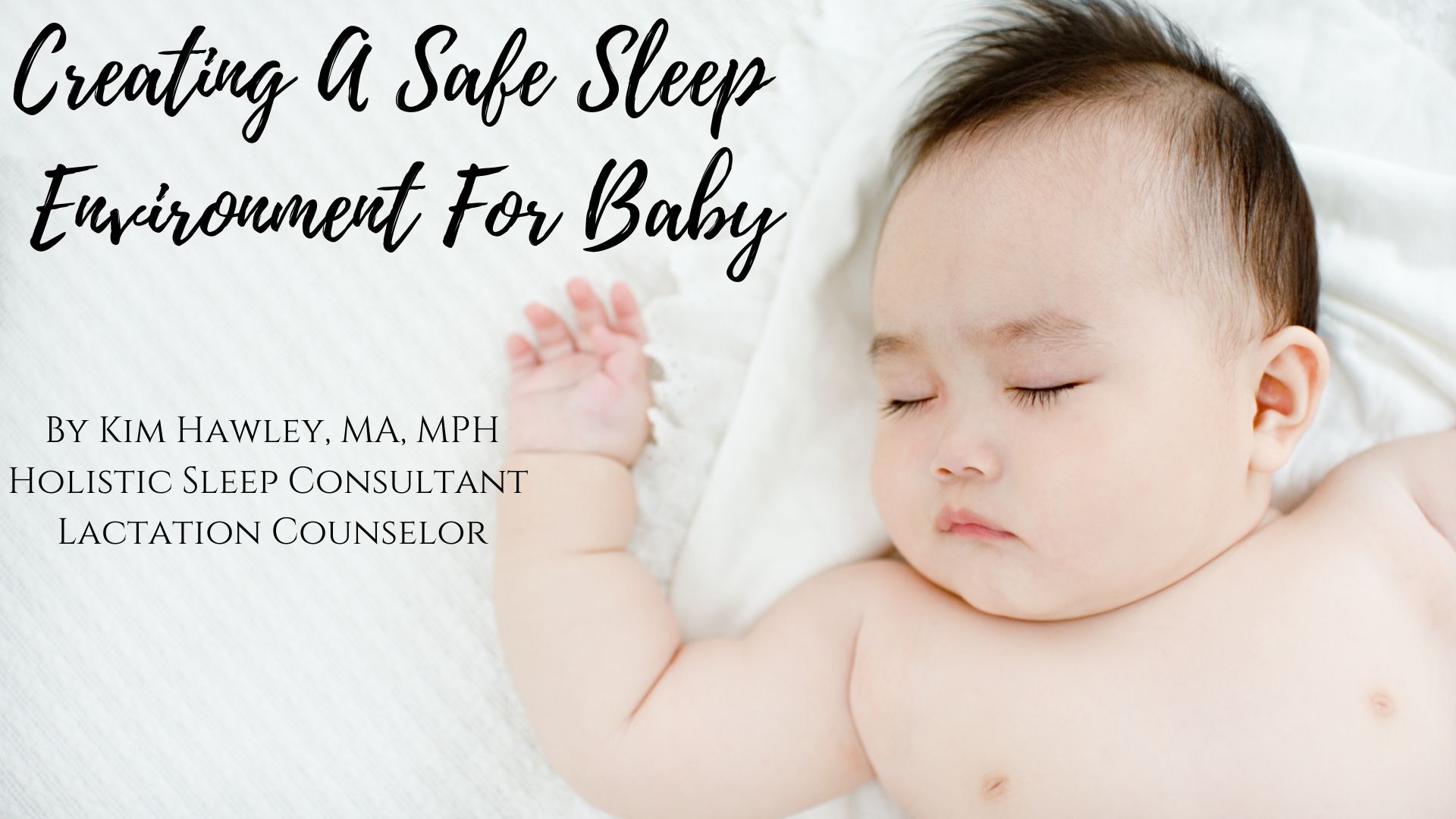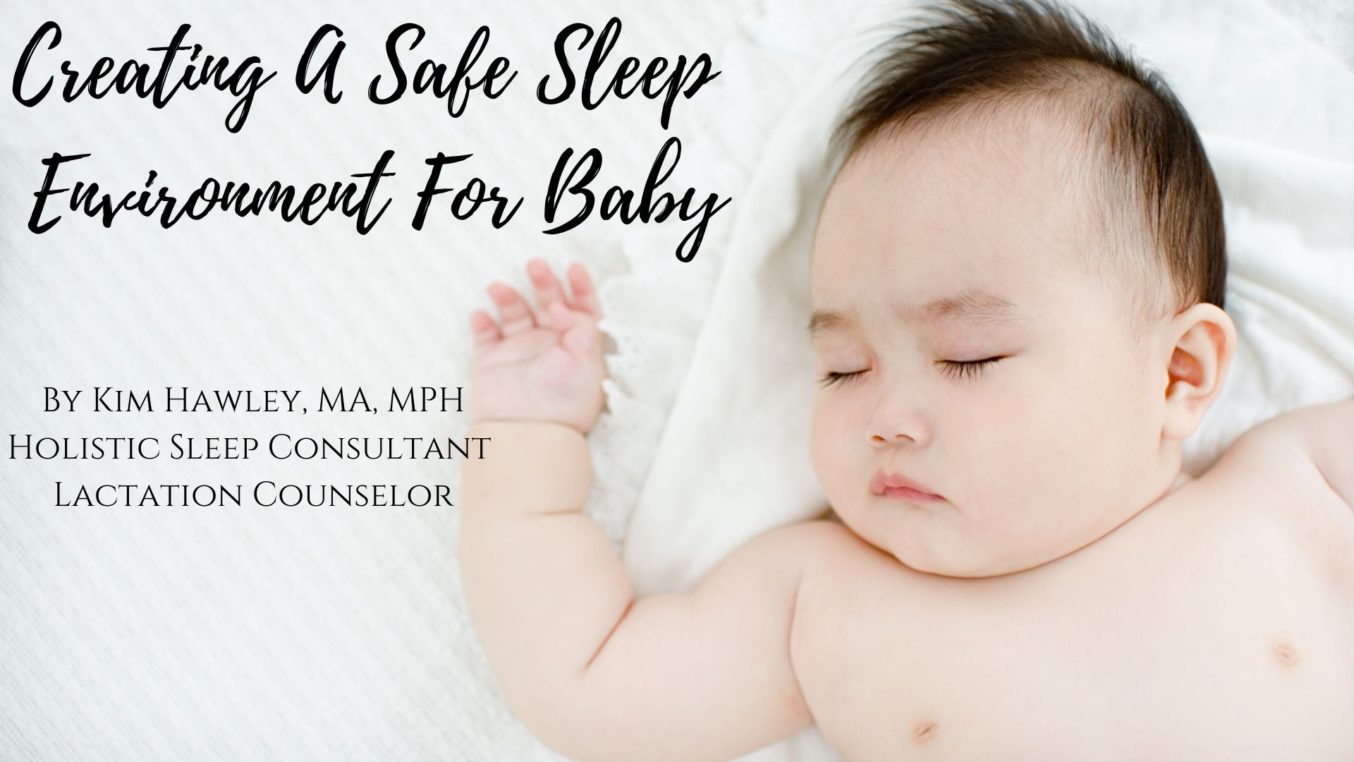
This guest blog post is written by Kim Hawley, MA, MPH,
Holistic Sleep Consultant, and Lactation Counselor. She is the owner of Intuitive Parenting, providing gentle, attachment-based sleep support for breastfeeding families. She also teaches Fundamentals of Breastfeeding and Sleep in Capitol Hill. There's still time to register for our next class on July 6th!
Safe Sleep
Creating a safe sleep environment for your baby is important and there are many factors to consider. The best set up will vary from family to family, but here are the guidelines to help you know what to consider.
The American Academy of Pediatrics (AAP) makes safe sleep recommendations for the U.S. for infants in the first year of life. These recommendations include strategies that reduce the likelihood of SIDS (Sudden Infant Death Syndrome) and accidental suffocation and entrapment deaths. Although the risk for these events is low; they are tragic outcomes. It is important to create the safest possible sleep environment for your family. A summary of their recommendations is below. These recommendations are meant for every sleep, including naps.

Babies under one year should always:
• Be put to sleep on their back. Once baby can roll you can let them sleep in the position they find most comfortable.
• Sleep in the same room on a separate surface as a responsible caregiver for ideally the first year but a minimum of six months. This is often called room sharing.
• Sleep on a firm surface, free from pillows, blankets, and other soft objects (this includes bumpers).
• Sleep on a mattress with no gaps between the mattress and crib frame.
• Be away from dangling cords, outlets, windows and other potential safety concerns.
• Be appropriately dressed for the temperature to avoid overheating.
• Have a smoke free environment both during pregnancy and after.
• Breastfeed whenever possible.
The AAP discourages bed sharing but does recommend that babies sleep on a separate surface in proximity to their parent or care giver (room sharing, but not bed sharing). Their most recent guidelines, however, acknowledge that tired parents often fall asleep with their baby, sometimes in more dangerous places in an effort not to bed share. Research tells us that many parents, especially nursing parents, bed share at some point whether they planned to or not. It is safer to assume you may fall asleep with your baby at night and take basic precautions than to fall asleep in a potentially more dangerous situation.
All experts agree that you should never sleep with your baby on a couch, recliner, or glider! The risk that baby will slip into a position that compromises their airway is too high. Other popular sleeping arrangements such as Rock N Plays, car seats, swings, and sleep nests are not designed for unsupervised sleep.
Even though the AAP does not support bed sharing, there is a large body of research demonstrating that it can be practiced safely. If you would like to see if your family has any lifestyle factors that may increase your bed sharing risks, Baby Sleep Information Source, an evidence-based UK resource, has a bed sharing quiz on their app. Most research finds that the lowest risk population for bed sharing described in the La Leche League International Safe Sleep Seven includes: parents who are breastfeeding, sober, and non-smokers; babies who are healthy, on their back, and lightly dressed and unswaddled; and that this pair is sharing a safe surface. There are high quality resources that describe how to make your bed as safe as possible for bed sharing. It’s also worth noting that bed sharing is the cross-cultural and historical norm, and many countries bed share routinely with much less infant sleep related deaths than the U.S.


